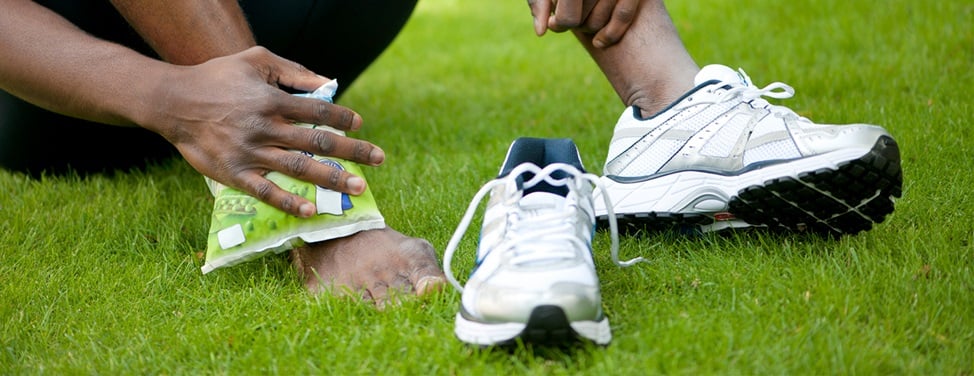Stress Fracture

Overview
A stress fracture is a small crack in a bone. They often develop from overuse, such as from high-impact sports like distance running or basketball. When muscles are overtired (fatigued), they are no longer able to absorb the shock of repeated impacts. When this happens, the muscles transfer the stress to the bones, creating a small crack or fracture.
Most stress fractures occur in the weight-bearing bones of the foot and lower leg. The most common sites are the second and third toes (metatarsals) of the foot. Stress fractures are also common in the heel (calcaneus), the outer bone of the lower leg (fibula), and the navicular, a bone on the top of the midfoot.
Our approach to stress fracture
Stress fractures generally heal on their own with simple measures, such as avoiding activities that put stress on the area. In some cases, however, surgery is needed to help the fracture heal properly.
Many stress fractures occur in the foot or lower leg. Our team includes highly trained orthopedic surgeons who specialize in that area, as well as podiatrists, physical therapists and pedorthists (specialists in modified footwear and supportive devices for the lower leg). Our goals are to relieve pain and restore mobility, so patients can return to their normal lives and the activities they enjoy. We offer doctor's appointments, medical imaging and physical therapy in one convenient location.
Awards & recognition
-

Among the top hospitals in the nation
-

Best in Northern California and No. 6 in the nation for orthopedic care
Signs & symptoms
Signs and symptoms of a stress fracture may include:
- Pain that develops gradually, increases with weight-bearing activity, and diminishes with rest
- Pain that becomes more severe during normal, daily activities
- Swelling
- Tenderness to touch and possible bruising
Diagnosis
Stress fractures are difficult to see on X-rays until they have actually started to heal. Your doctor may recommend a bone scan, which is more sensitive than an X-ray and can detect stress fractures early.
Treatments
Treatment depends on the location of the stress fracture. Most stress fractures will heal if you reduce your level of activity and wear protective footwear for 2 to 4 weeks. Your doctor may recommend that you wear a stiff-soled shoe, a wooden-soled sandal, or a removable short-leg fracture brace shoe. Athletes should switch to activities that place less stress on the foot and leg. Swimming and bicycle riding are good alternative activities.
Stress fractures in the fifth metatarsal bone (on the outer side of the foot) or in the navicular or talus bones (the bone that forms the lower part of the ankle joint) take longer to heal, perhaps as long as 6 to 8 weeks. Your doctor may apply a cast to your foot or recommend that you use crutches until the bone heals. In some patients, surgery may be needed to ensure proper healing.
UCSF Health medical specialists have reviewed this information. It is for educational purposes only and is not intended to replace the advice of your doctor or other health care provider. We encourage you to discuss any questions or concerns you may have with your provider.











